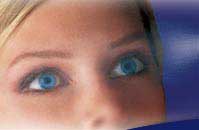Temporary Blurred Vision More Likely in Winter Warns Dry Eye Researcher
Blurred Vision Is Often a Symptom of Winter Dry Eye Reports Water and Eye Researcher Sharon Kleyne
Temporary blurred vision far more likely to occur in winter, according to water and eye researcher Sharon Kleyne. That's because blurred vision is a common a symptom of dry eye syndrome, which is also more likely to occur in winter. Kleyne warns that episodes of temporary blurred vision, especially when associated with other dry eye complaints, can be extremely dangerous. She also notes that the condition is easily relieved.
|
FREE SHIP OFFER ENDS 07/29/24 COUPON CODE LP891 CLICK HERE NOW TO SAVE |

|
Sharon Kleyne hosts the globally syndicated Sharon Kleyne Hour Power of Water® radio show on VoiceAmerica and Apple iTunes. Kleyne also Founded Bio-Logic Aqua Research, a fresh water and health research, education and product development center. The Research Center's global signature product, Nature's Tears® EyeMist® provides a personal portable humidifying mist that prevents eye dehydration by instantly supplementing lost tear film water.
Dry eye complaints, including temporary blurred vision, Kleyne explains, are more prevalent in winter for a simple reason: Cooler air can't hold as much water vapor - also called "humidity" - as warmer air. The lower the humidity of the surrounding air, the greater will be the tendency of the liquid water in the vicinity to evaporate. This increased evaporation, says Kleyne, applies equally to lakes, puddles, wet sidewalks and the moist tear film covering the eyes. When the tear film, which is 98% water, loses a portion of its water evaporation, or loses water for any reason, a condition develops called "dry eye syndrome."
Blurred vision, according to Kleyne, occurs when the eyes' tear glands attempt to compensate for the loss of tear film water to evaporation by flooding the eyes with reflex tears. This causes the eyes to become temporarily watery and impairs light refraction. Dry eye may also cause dry spots on the cornea, the clear part of the eye. Since water is critical to light refraction, images transmitted through a corneal dry spot tend to be distorted and unclear. In both cases, closing the eyes briefly, or taking a short nap, will often clear up the problem.
Blurred vision as a dry eye symptom is most likely to occur late in the day, in the presence of dehydrating factors such as smoke and pollution, or during an engrossing activity such as working at a computer. Other dry eye symptoms include itching and burning eyes, eye fatigue and headaches.
The dry eye rate also increases in winter because more time is spent indoors, where insulated walls and windows and forced-air heating can also be dehydrate the tear film. .
Kleyne cautions that blurred vision can have many causes, of which the top two are dry eye and foreign matter or chemicals in the eye. Blurred vision may also be caused by nearsightedness, migrant headaches and other factors.
.
Blurred vision can be dangerous, says Kleyne, noting that eye injuries and eye irritation account for 85% of reported workplace injuries. The number one reported workplace complaint associated with eyes is blurred vision. Blurred vision can affect productivity, can disorient, and can compromise safety on the job.
Blurred vision is most commonly dangerous, says Kleyne, when driving at night. Lights may be seen as streaks, making it more difficult, for example, to identify the brake lights on a car slowing down or the turn signal of a car changing lanes. Light streaks may also make it more difficult to see lane stripes and traffic signs.
The solution? According to Kleyne, if eyes are well humidified to begin with, losing a small amount of tear film water to evaporation is less likely to cause problems. Above all, says Kleyne, drink at least eight glasses of water each day, in addition to all other fluid intake. Kleyne suggests keeping a couple windows slightly open - especially in the bathroom - to let in fresh air. Kleyne also recommends house plants and bowls of water to raise the indoor humidity/vapor level, and placing baffles over heating vents so they don't blow directly onto eyes and skin. Frequent baths or showers are also beneficial.
According to Kleyne, her company's Nature's Tears® EyeMist® product is specifically designed to replace and supplement lost tear film moisture. . .
©2014 Bio-Logic Aqua Research. All Rights Reserved.
Sharon Kleyne History |
Sharon Kleyne Discover More |
|
Sharon Kleyne Press Release |
Sharon Kleyne Health Tips |








